
We kindly inform you that, as long as the subject affiliation of our 300.000+ articles is in progress, you might get unsufficient or no results on your third level or second level search. In this case, please broaden your search criteria.


Content of the main Bulgarian scientific journals for the current year in linguistics, literature, history, folklore, ethnography, archeology and art studies
More...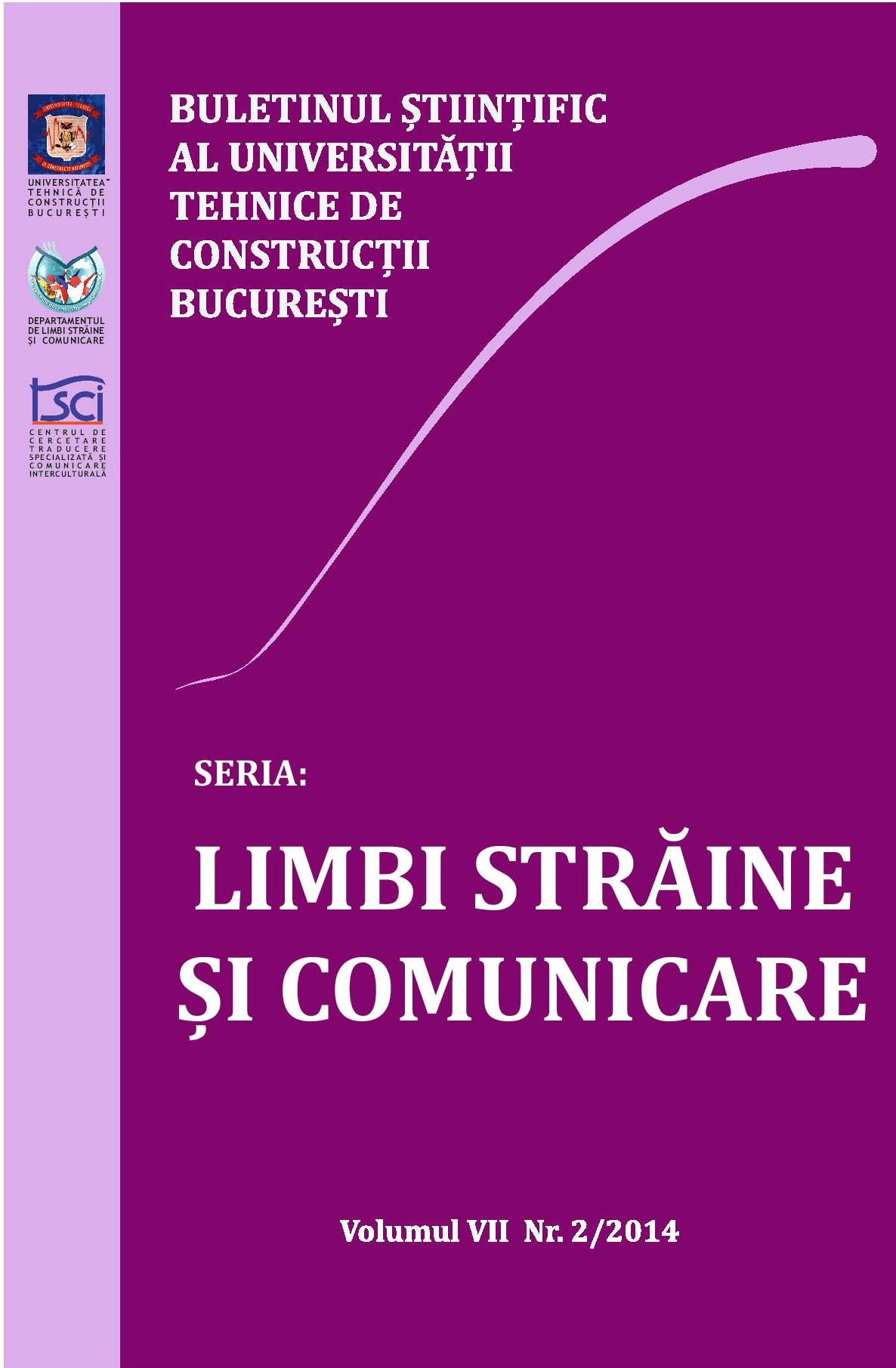
In order to contextualize the theme discussed in this article is presented briefly the historical development of educational sciences from the Didactica Magna to Postmodern Didactic, then localized reconstruction of contents in Didactics of specialty between discursive strategy and argumentative performance. Reconstruction of contents by reported to the idea of didactic transposition, the main theme of discussion of this article, is analyzed in relation with didactic speech, which has the role to put into practice in the classroom the idea of didactic transposition. Didactic speech, mediated by computer, is a current reality at the present time, as generalization in the educational process. Reconstruction of contents is placed on the axiomatic background of curriculum paradigms because changing paradigm has the effect of change the architecture of didactic speech to present in classroom the scientific contents reconstructed by didactic transposition. Finally, some conclusions are presented.
More...
The main purpose of this study was to find out the listening strategies used byupper-intermediate and intermediate Iranian FFL learners and to compare the listening strategies of both groups of participants in this study. A total number of 30 Persian EFL learners were administered a listening comprehension test and a listening strategy use questionnaire. The test consisted of two class lectures, each of them followed by comprehension questions comprised of multiple choice and essay questions. After the test, participants were also asked to complete a questionnaire that included 20 items asking about the use of cognitive, metacognitive, andsocio-affective strategies. The listening test and listening strategy use questionnaire data was run through multiple statistical tests, including factor analysis, multiple regression, and t-tests, to identify the strategies the research participants had used and explain the relationship between listening strategy use and listening comprehension. The results indicated that both upper-intermediate and intermediate listeners used metacognitive, cognitive, and socio-affective strategies. However, there was some variation in terms of the use of cognitive and metacognitive socio-affective strategies. As far as cognitive strategies were concerned, the results revealed that the upper-intermediate listeners employed more top-down strategies than the intermediate listeners, whereas there were no significant differences in the use of metacognitive strategies. The results also indicated that cognitive strategies are the most powerful predictor of listening comprehension, followed by socio-affective strategies, whereas metacognitive strategies were the predictor that accounted the least for listening comprehension
More...
This paper studies the reflection of ethic relations between the interests of human beings and of non-human beings in online games and eco games. It will include a philosophical analysis of the inherent value of nature, emphasized by the aesthetic characteristic of being natural etc., and on the same time it will follow the impact that online games have on the education of the young generations’ ecological awareness and behaviour
More...
The study presents empirical results of the dissertation “Bulgarian Virtual Labor Market and Transformation of Power”. Looking at the labor market as socio-economic field of relations and interactions be¬tween labour and capital with running two parallel processes of supply and demand of performance and jobs, the virtual labor market is considered as a network of these same relations and interactions performed in an informational, communicational and technological– virtual environment. Its researched whether and to what extent each of the participants in the labour market are included and participate in the virtual space, do they contribute to its formation or just use what so far has been created by others. The research problem was related to the distribution of power between the indi¬vidual and collective actors involved in the virtual labour market. The study presents specific aspects of the functioning of the virtual labour market in Bulgaria and the transformation of power generated by the interpretation and analysis of the empirical data from the research conducted by the author.
More...
Many men of education run away to European cities after the invasion of the entire Balkan Peninsula. The ideals of humanism and renaissance were affirmed, thanks to their intelligence, which brought the Greek-Roman classicism to the top of the fields of literature and art. This paper will present the works of brothers Gjon (Giovanni) and Pal (Paolo) Gazulli, the poet Michele Marulli, the writer Marin Barleti (Marino Barlezio), the philosopher Leonik Tomeu, the painter Vittore Carpaccio, excelled with their talent and works in the city of Venice. The Albanian community needed a fortune to compete with groups from other nations, with the Dalmatians among many. They needed to decorate the premises of their association with precious objects and paintings: there is proof of this in the paintings of Vittore Carpaccio, in the first years of the XVIth century. Carpaccio‟s works are important, they present, in the cycle “Stories of St. Ursula”, the uniform of Albanian soldiers serving the Republic of Venice.
More...
The aim of the article is to bridge the gap in the study of Nicolaus de Radom’s output by presenting a comparative analysis of his works as juxtaposed with other European artists. The prevailing opinion of musicologists, such as Maria Szczepańska and Mirosław Perz, is that Nicolaus de Radom’s music is closely related to the works of northern Italian composers. However, such a claim has not yet been supported with the detailed comparative analysis. The article presents the analysis of the manuscripts Kras 52 and Wn 378, signed by Nicolaus de Radom, confronted with selected masses by Johannes Ciconia and Antonio Zacara da Teramo. A detailed analysis of a two-sectioned cyclic mass helps to distinguish certain similarities and differences in the unification of the Mass pairs, as they are exemplified in the music of the composers. The works of all of the three artists manifest secular songs’ influence on the shaping of the Mass as a genre, although each composer adapts it in a slightly different way. Moreover, it is stated that a thorough analysis of the 15th-century Masses is necessary to determine whether there are any links between Nicolaus de Radom’s, Antonio Zacara da Teramo’s and Johannes Ciconia’s works, and whether there are any similarities in their compositional technique. Presented analysis of de Radom’s, Zacara da Teramo’s and Ciconia’s Masses refutes the claim that Nicolaus de Radom’s output bears closest relation to those of Zacara da Teramo’s. The results of the study reveal that there are no straightforward examples which would support such a theory.
More...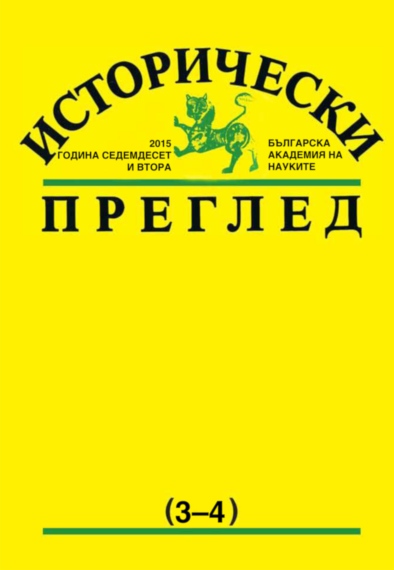
This publication presents an unpublished document relating to the economic history of the Bulgarian lands in the 19th century. This historical source is a translation of an Imperial Ottoman Act from Ottoman into Greek language (Μετἀφρασις τοῦ Ὑψηλου Ὀθωμανικοῦ Περατίου). It is a part of the archives of Georgi Popsimeonov, also known as Georgi Chorbadji or Georgi Anangnost of Arbanassi, Veliko Tarnovo district. The publication presents information about the document, its segmented version of the Greek language, as well as its translation into Bulgarian.
More...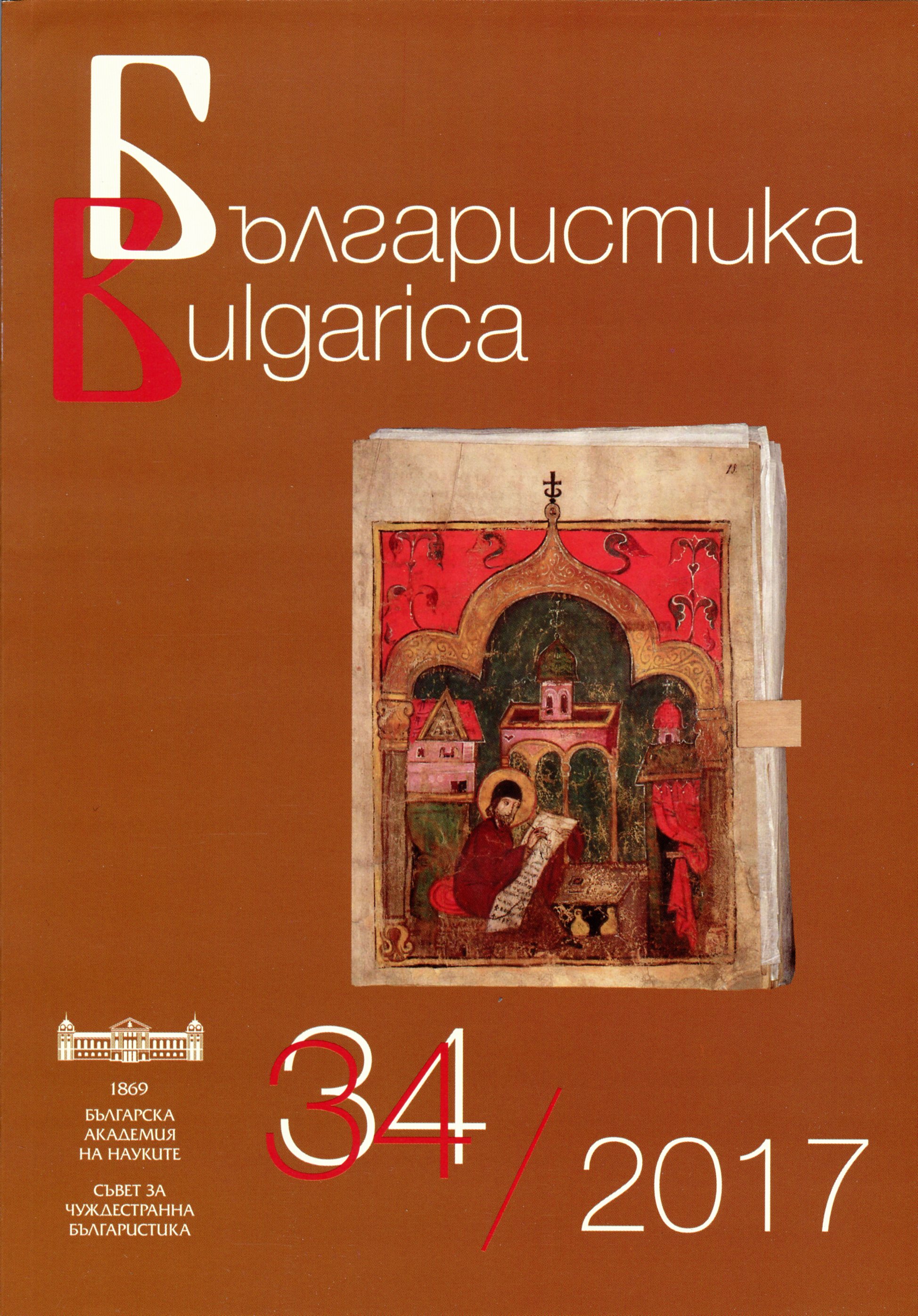
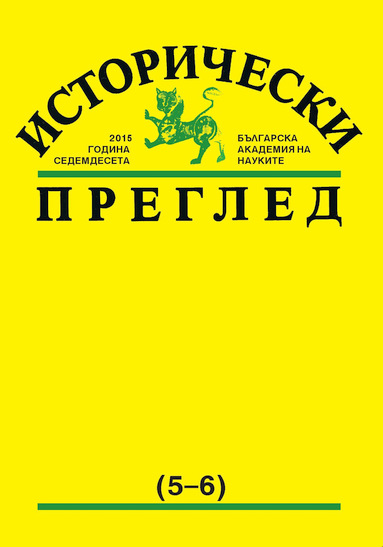
On the basis of one voynuk register from 1529, as well as of three lists of timars and waqfs from 1516, 1530 and 1570, new data about the voynuk and rayah population of eleven settlements situated south of today’s town of Pazardzhik at the foot of the Western Rhodopes, is presented in the article. Most of these voynuk villages were within the borders of the Chepino nahiya, which in different times was part of the Samokov or Tatar Pazardzhik kazas. The data from the voynuk register of 1529 and from one waqf list from 1570 gives reasons to disprove the legendary knowledge about the presence of a big group of voynuks in the Chepino region, who according to the published by Stefan Zahariev “chronicle story” of Priest Metodi Draginov, became the main reason for the allegedly violent imposing of Islam among the local population. There was the opinion that this part of the “chronicle story” is fictional interpretation by Stefan Zahariev himself. The obvious contradiction between the historical reality and the “chronicle” of Metodi Draginov consists of the fact that in the first half of ХVІ century no big group of voynuks, except for three voynuk families from the village of Rakitovo, lived in the villages in the Chepino region. In ХVІІ century, when according to the “chronicle note”, the dramatic events of islamization of the voynuks from the Chepino region allegedly happened, this population category had long before disappeared from the historic scenery of this region of Bulgaria, as around 1570 the last voynuks from Rakitovo were recorded as ordinary rayah from the waqf of Sultan Suleiman I Kanuni.
More...
The current work aims to create a clear image of the classification of source materials used in the research of the demographic development of the Bulgarian territories during the Renaissance as well as to determine the place of the Greek sources among them. Various source material classifications have been considered in the study of historical demography. The most common classification in the study of the Bulgarian historical demography is based on the source language. According to the language criterion the sources for the demographic development of the Bulgarian territories during the Renaissance are classified in four main groups – Bulgarian, Ottoman, Greek and others. The amount and diversity of Greek source materials allow: 1) the support of already existing hypotheses by providing already known data; and 2) disproving already existing hypotheses or building new ones by providing unknown data. Although the Greek sources greatly improve our vision about the historical demography of the Bulgarian territories during the Renaissance, our research shows that by only considering Greek sources we would not get a realistic image. Rather, we should consider these sources as a part of the whole source base and analyze them together with sources from the other three language classes.
More...
A little more than fifty years after publishing of Jireček’s History of the Bulgarians (Dějiny naroda bulharskeho), a new Czech work on Bulgarian past appeared – History of the Bulgarian People (Dějiny naroda bulharskeho) by Frantishek Hybl. Today the name of Hybl is almost forgotten. This paper presents the assessments of three Bulgarian scholars (Lyubomir Miletich, Yurdan Trifonov and Petăr Kyurkchiev) concerning Hybl’s work, which were published in 1930 in weighty Bulgarian periodicals. It also poses the question whether Hybl’s History of the Bulgarian People not be carefully reconsidered.
More...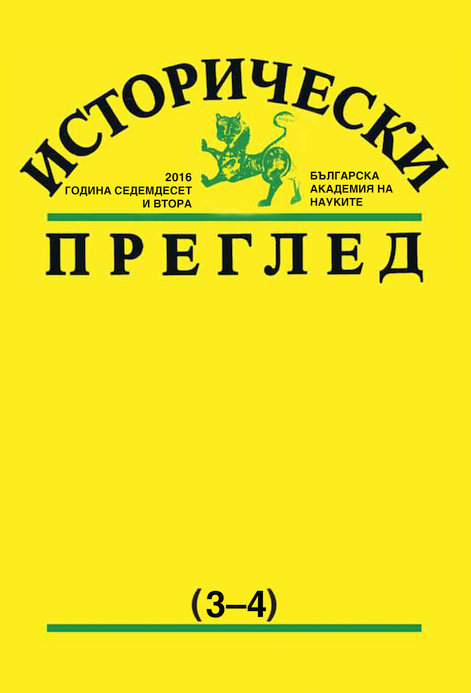
The author presents an up-to-date look at scientometrics - science which gives one of the right markers in studying the history of science for pedigree; the priority functions of the magazine as primary scientific communication are revealed - following the example of the Genealogy journal. The methodology of the study on the dynamics of the publications for the period from 1990 to 2015 is based on the historiographic and scientometric approach. Their text-critical description provides information on the state of the scientific knowledge, but its dynamics, in a synchronic and diachronic aspect, is illustrated de visu through diagrams, tables and other forms of representation of the publications.
More...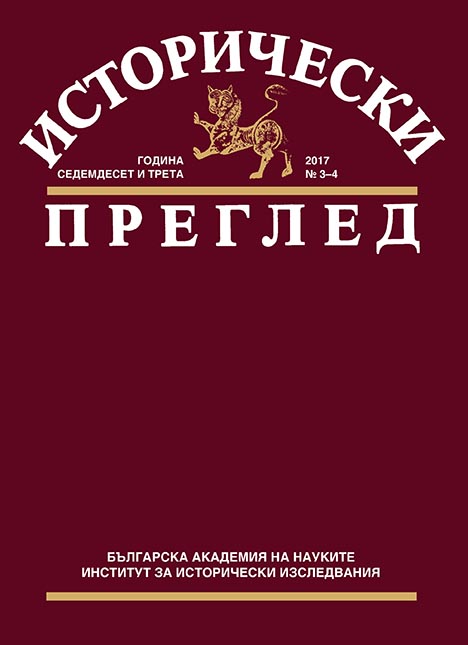
Registers of travel permits for Bulgarians, issued by the Ruse Municipality, stored in the Ruse State Archive, contain unpublished reports of alleged two short visits of Levski to Ruse in early September and mid-October 1869. These documents, despite the fragmentary information, contain invaluable information about not yet sufficiently studied aspects of the everyday life of the Bulgarian society during the Revival period, specific information about the genealogy research and reconstruction of the past regarding the intensity of trips of Bulgarians through Ruse and their ultimate goal. It is assumed that the Vasil Ivanov, registered on September 10, 1869, was Levski, who visited Ruse to meet a Polish emigrant, Rachkovsky (that is the name mentioned in the cited document, but probably it is Mr. Rovinski). The second visit is in the middle of October when Levski made an unsuccessful attempt to build a secret channel, Ruse – Giurgiu, to carry the revolutionary correspondence (the revolutionary channel Bucharest – Giurgiu – Ruse began functioning in the second half of 1871)
More...
The article presents in original and translation an unpublished source, stored in the Istanbul Ottoman Archives, which refers to the early history of the BRCC. The documentary tells of two meetings of the Bulgarian Central Revolutionary Committee (BRCC) held in Bucharest late 1869 – early 1870 and provides valuable information about Vasil Levski’s participation in the meetings. The author of the report speaks of the revolutionary preparations of the Bulgarians in Bucharest and describes the meeting of the conspirators who discussed the idea of a revolt in the Bulgarian lands in the spring of 1870. The source characterizes Levski as “one of the most active and energetic agitators … very famous.”
More...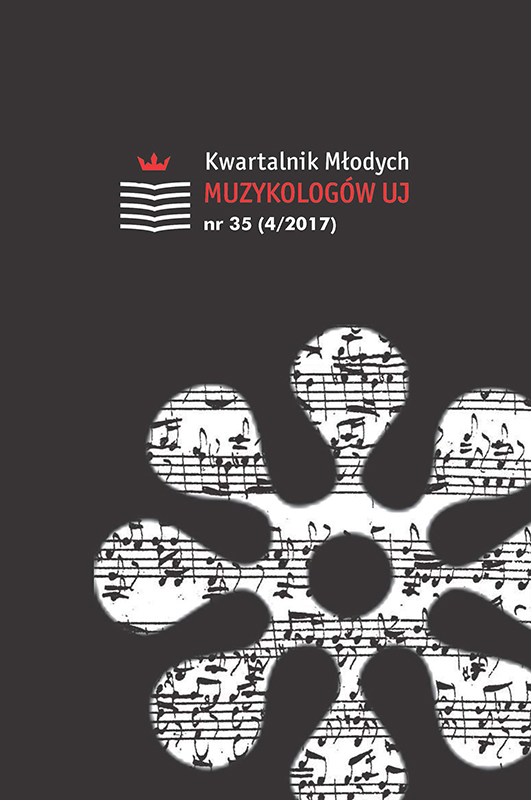
Since the middle of the 19th century, Franz Schubert’s song cycles Die schöne Mullerin and Winterreise are not only considered as an outstanding contribution to the Lied genre, but also as “romantic” compositions par excellence, whose protagonists might be depicted adequately only by performances of male singers. The “masculine nature” (Carl Lafite) of these thoughts, emotions and actions might be inappropriate for female singers. This attitude, which is still present today (even amongst professional musicians and musicologists), though, contradicts not only the performance practice of the early 19th century, but even Schubert’s handling of his songs. In fact, the idea of these two cycles as “men’s cycles” has only developed in the course of the 19th century, when various impacts such as the general upvaluation of the Lied genre, the transfiguration of the composer, the interpretation of his songs as being a personal statement, and the idea of Werktreueshaped the reception of Schubert’s compositions. These factors led to the consolidation of strong and still valid power structures, in which men are regarded as the norm, whereas women (and other alternative voice categories like countertenors) appear as deviation from this norm. These structures are tightly related to similar conditions and principles which have been outlined in the past decades by the masculinity studies on higher levels of our society. In this paper, I will set out this whole process by delineating the performance practice at Schubert’s time, his own attitude (insofar as it is possible), the various influences of romantic musical aesthetics, and the development of the mentioned performance tradition towards the end of the 19th and the beginning of the 20th century. Furthermore, a number of statements from the 21st century will demonstrate that these concepts are still common today, and I will correlate them with some certain principles pointed out by masculinity studies from the last decades.
More...
The work concerns Giovanni Battista Bassani’s output and its reception with a particular emphasis on manuscripts preserved in the collection from parish church in Grodzisk Wielkopolski. The oeuvre of this composer has been preserved to a huge amount today—there are 441 manuscripts and 67 prints preserved in 287 copies.The article consists of two parts. The first chapter presents a list of sources of the composer’s works, created using the RISM database with special attention to the Polish sources. In addition, a list of sources identified as the transmission of Bassani’s output is presented. The second part of the article characterises the composer’s works preserved in the collection from parish church in Grodzisk Wielkopolski.
More...
Dresden played no role in Carl Ditters von Dittersdorf’s life, but history made this city one of the most significant places regarding preserved sources of his works. In the Department of Special Collections (German: Sondersammlungen) of the Sächsische Landesbibliothek—Staats- und Universitätsbibliothek in Dresden (English: Saxon State and University Library Dresden, abbr.: SLUB), there are, among others, more than thirty archival sources containing Carl Ditters von Dittersdorf’s symphonies. That makes it the third richest collection of symphonic works by this composer. The majority of them comes from court’s theatre of Duke Frederick August Braunschweig-Oels in Oels (Öls, Polish: Oleśnica). It is one of the most representative collections of Dittersdorf’s symphonies from all known archives. There are several composer’s autographs, partial autographs, a large variety of works from all periods of his activity, and a few unique copies of symphonies as well. A minor body of Dittersdorf’s symphonies comes from two different sources, until recently unknown. One group is the set of partbooks (contemporary with Dittersdorf), including—apart from Dittersdorf’s works—several dozen movements of serenades, symphonies, string quartets etc. of G.B. Sammartini, J.G. Graun, J.Ph. Rameau, the Stamitz family and J. Haydn, apparently used in performances on the occasion of court activities, not in concerts. The second, from 1860s, is the set of scores, prepared by C. Mehner.
More...